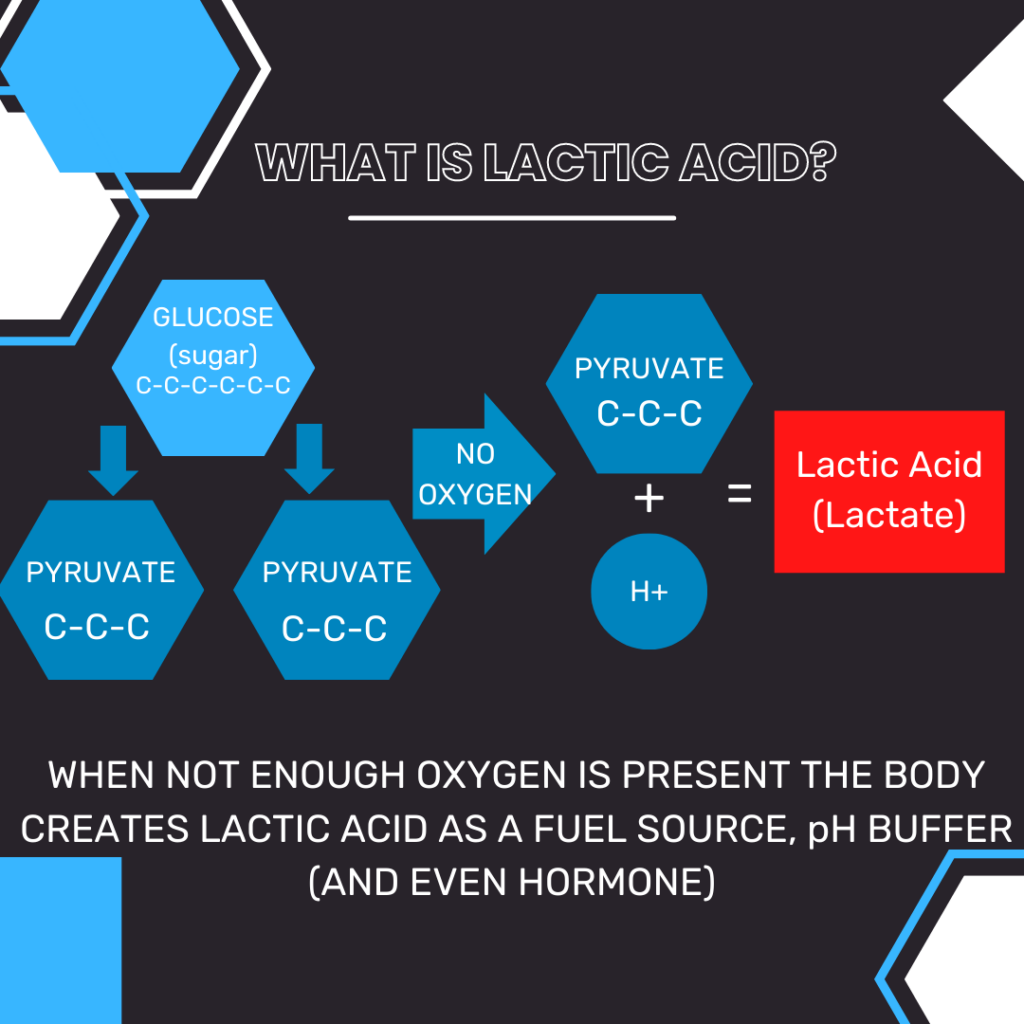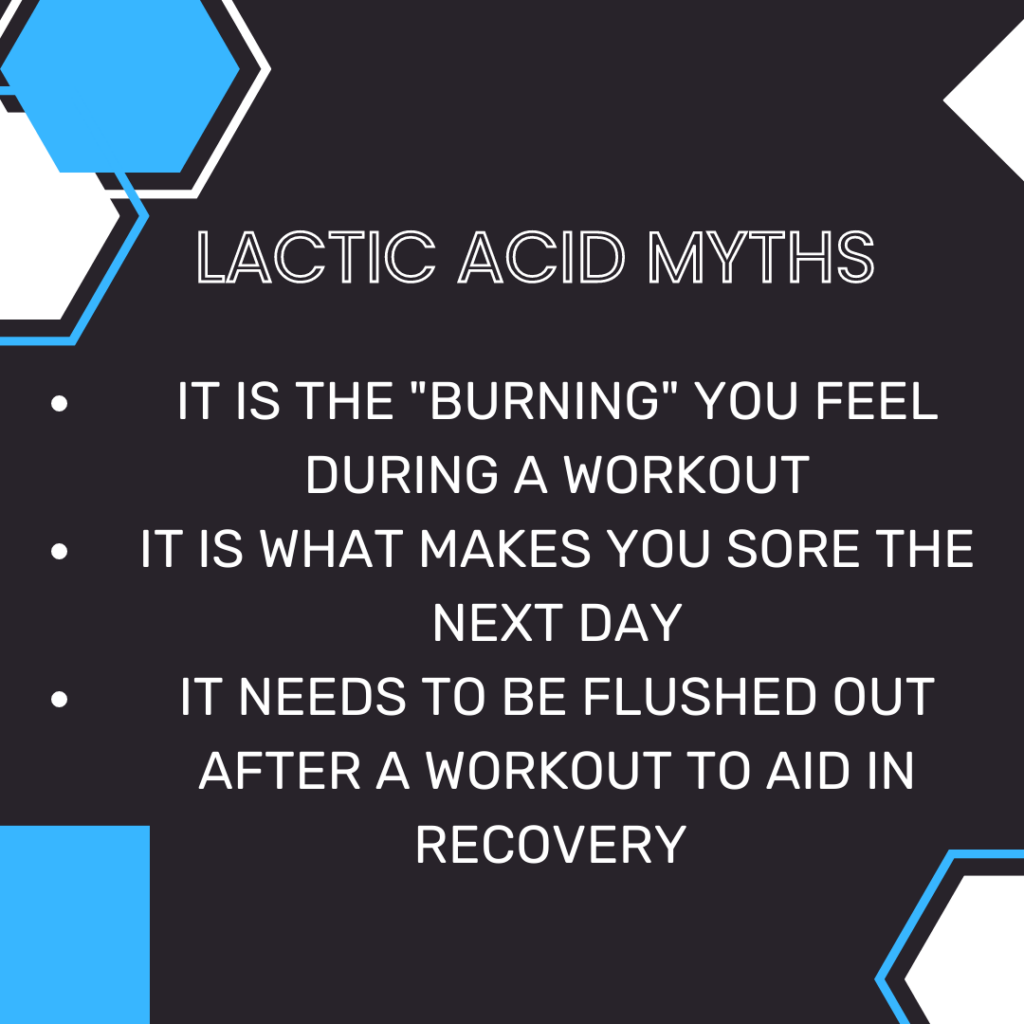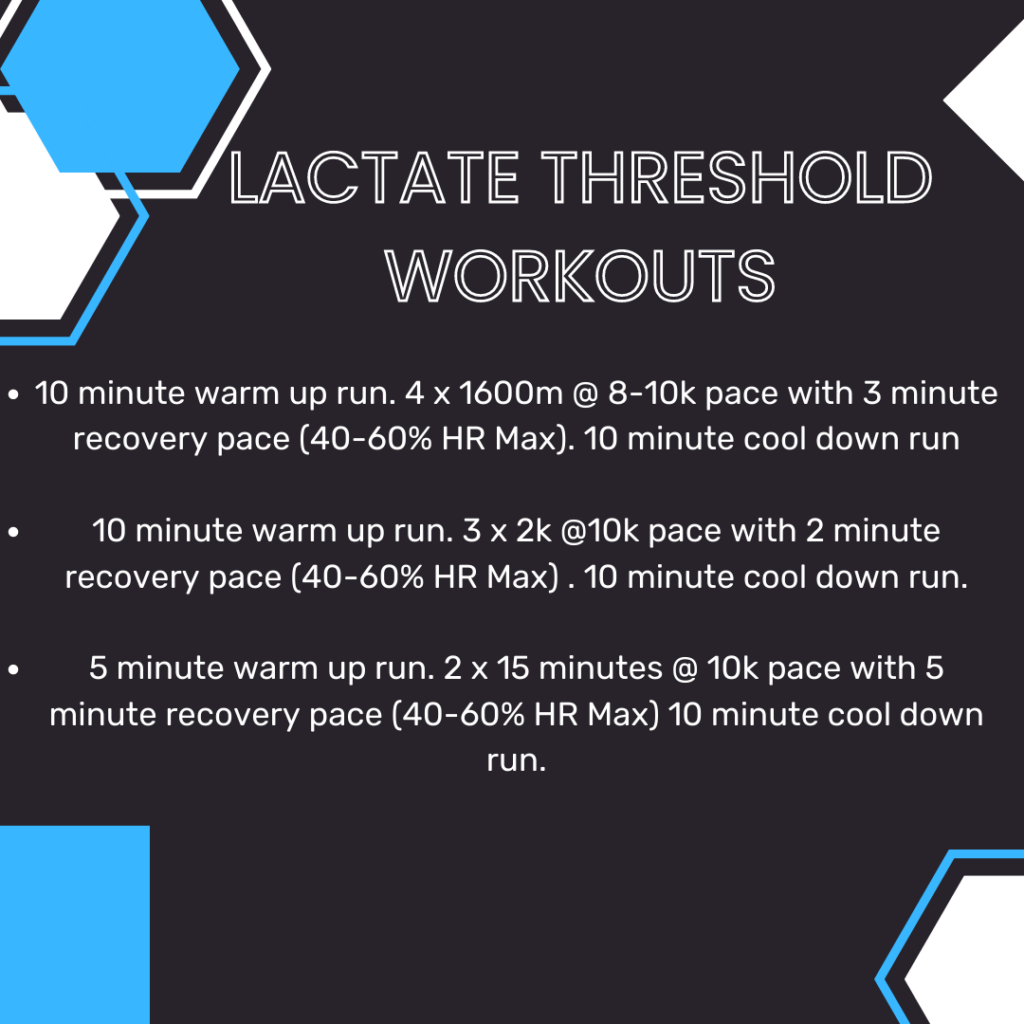If you are a runner or endurance athlete looking to push your limits and increase your performance, understanding lactate and the concept of lactate threshold is crucial. Today we will delve into what lactic acid is, explain what lactate threshold means, and explore the immense benefits of incorporating a lactate threshold running workout into your training routine.
What is Lactate and where does it come from?

Lactate, also known as lactic acid, is a naturally occurring compound produced by our muscles at rest and during exercise. When we need energy our body breaks down 1 glucose molecule (the most easily broken down sugar in the body) into 2 pyruvate (think partially digested sugar). When we have enough oxygen the body moves pyruvate into the muscle cells to create a LOT of energy.
However, when we are working hard (anaerobically or in a high aerobic state where we have much less oxygen) we don’t have enough O2 to carry the pyruvate into the muscle cells. So to do something with those 2 pyruvate molecules, our body attaches a free-floating, acidic hydrogen ion (H+) and slaps it onto the pyruvate thus creating (drum roll) lactic acid! By taking up hydrogen it helps to make your muscle a LESS acidic environment.
In the past, it was widely believed that lactate accumulation in muscles led to fatigue. However, recent research has debunked this misconception, and we now understand lactate to be a valuable fuel source for the muscles during exercise (1). Your muscles will even ship the lactate to other muscle fibers of the same muscle or send it to different muscles (including your heart), liver, and even brain. Because it is “partially digested” your body will prefer it to glucose since it is easier to use to create more energy.

Lactate Threshold Defined:
Lactate threshold refers to the exercise intensity at which the blood lactate begins to exceed its removal rate. You can generally race for 1 hour at this threshold. However, you do not want to go past this point while training, so the aim is to run at a pace right at your currently trained threshold level.
Lactate threshold is usually expressed as a percentage of an individual’s maximal oxygen uptake (VO2 max), which is the maximum amount of oxygen your body can use during exercise (2). Generally, LT training is done at 82-88% of your max heart rate. You can use this helpful V-DOT calculator to find your appropriate threshold training paces for a given distance at your respective pace.
The Benefits of Lactate Threshold Running Workouts:
- Improved Endurance Performance: Numerous studies have shown that regularly training at or near your lactate threshold can significantly enhance endurance performance (3). By increasing your lactate threshold, your body becomes more efficient at using lactate as a fuel source, delaying the onset of fatigue during prolonged exercise.
- Enhanced Speed: Training at lactate threshold intensities can improve your speed at long distances. Research suggests that a higher lactate threshold allows runners to sustain faster paces for extended periods (4).
- Increased VO2 Max: Vo2 max is considered one of the key determinants of endurance capacity. Regularly performing lactate threshold workouts has been linked with improvements in VO2 max (5). These workouts challenge the body to adapt, leading to improved oxygen delivery and utilization, resulting in overall enhanced performance.
- Improved Mental Toughness: Lactate threshold workouts require runners to sustain a high-intensity effort over an extended period. These workouts push your mental limits, helping you develop greater mental resilience.

Lactate Threshold Workouts:
There are a variety of endurance workouts (running, biking, swimming, etc.) to train at your lactate threshold. Here are a few of our favorite running-specific LT workouts.

Understanding lactate and the concept of lactate threshold is essential for any runner striving to improve their performance. By incorporating lactate threshold running workouts into your training routine, you can reap the benefits of improved endurance, enhanced speed, increased VO2 max, and boosted mental toughness. So go ahead, challenge yourself, and unlock your running potential.
Happy Running!
Interested in coaching services, additional lactate threshold workouts, or want to address a current injury?
Schedule a Free Discovery Visit or coaching call today!
References:
- Brooks GA. Lactate: Link between glycolytic and oxidative metabolism. Sports Med. 2007;37(4-5):341-343.
- Faude O, Kindermann W, Meyer T. Lactate threshold concepts: How valid are they? Sports Med. 2009;39(6):469-490.
- Midgley AW, McNaughton LR, Jones AM. Training to enhance the physiological determinants of long-distance running performance: Can valid recommendations be given to runners and coaches based on current scientific knowledge? Sports Med. 2007;37(10):857-880.
- Raglin JS, Koceja DM, Stager JM, Harms CA. Influence of lactic acid accumulation on swim performance. Med Sci Sports Exerc. 199;22(6):747-753.
- Billat V. (1996). Interval training for performance: A scientific and empirical practice. Special Topics in Sports Medicine, 12-50.

